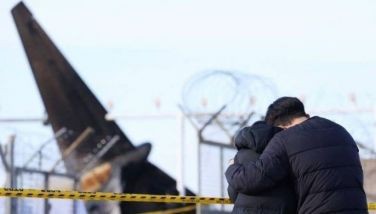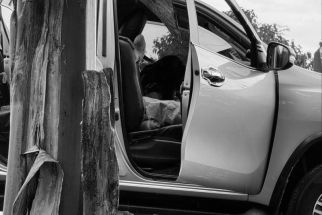A look at Balkan land routes migrants use to reach rich EU
Tens of thousands of migrants are increasingly using land routes north across the Balkans to reach the richer countries in the European Union, a likely safer alternative to crossing the Mediterranean, where capsized vessels and scores of drowning deaths are frequent tragedies.
Here is a country-by-country look at their typical path:
GREECE:
The majority of refugees and migrants seeking to enter the European Union do so through Greece, arriving on eastern islands from the nearby Turkish coast, often in unseaworthy dinghies and overcrowded boats. Once they arrive on the islands, they wait to be registered.
The vast majority of those arriving are refugees, mainly from Syria, and they receive a renewable permit to remain in the country for several months. Economic migrants receive papers saying they must leave the country within a maximum of three months. Very few want to stay in Greece however.
Most refugees and migrants buy regular ferry tickets to get to the mainland, although those who can afford it can also fly. With tickets scarce due to the peak holiday season, the government has also chartered a ferry to transport thousands stuck mainly on the island of Lesbos. From the mainland, they take inter-city buses or trains to head north to Greece's border with Macedonia.
___
MACEDONIA:
Thousands cross on foot from Greece to the town of Gevgelija, in southern Macedonia. Attempts to control the flow of people have sometimes resulted in scuffles with police. Once they cross the border, most are registered by officials, giving the migrants 72 hours to leave the country. The majority then try to get on overcrowded trains and buses in Gevgelija, for which they have to pay a fare to travel to the border with Serbia. Right now, they leave the country within a day, walking the final two kilometers (1.2 miles) across the border to the Serbian village of Tabanovce.
___
SERBIA:
Once in Serbia, the migrants walk or are driven in paid-for buses from a makeshift camp right on the border with Macedonia to a registration center in the southern town of Presevo. There, they get a permit that allows them to travel up north through Serbia toward the Hungarian border within three days. Those who have larger sums of money head up north in taxies or rented mini buses, while the poorer ones take trains and buses or simply just walk along the highways. Some stop in Serbia's capital Belgrade where those with money sleep in hotels and eat in restaurants, while those without spend a night in the open, in parks or under river bridges. Once they reach the Hungarian border, they wait for nighttime to attempt crossing the border by foot.
___
HUNGARY:
Over the past weeks, about 1,500 migrants a day have been entering Hungary through its border with Serbia, where the government is building a 4-meter (13-foot) high fence. Most migrants, after requesting asylum, are registered by authorities and are taken for free by train from southern Hungary to one of several refugee centers around the country.
However, while passing through Budapest, Hungary's capital and central transportation hub, many attempt to continue their journey instead. Most take trains or pay human traffickers to reach richer countries further north in the EU — such as Germany, Sweden and the Netherlands — before their asylum claims are settled.
- Latest
- Trending
































